The Big Read: How Covid-19, dubbed the ‘inequality virus’, has further widened the rich-poor gap
SINGAPORE — Crammed in a two-room rental flat in Tampines with 11 other family members, homemaker Jalinah Jamaludin often fears that the Covid-19 virus could infect her whole family due to their living conditions.
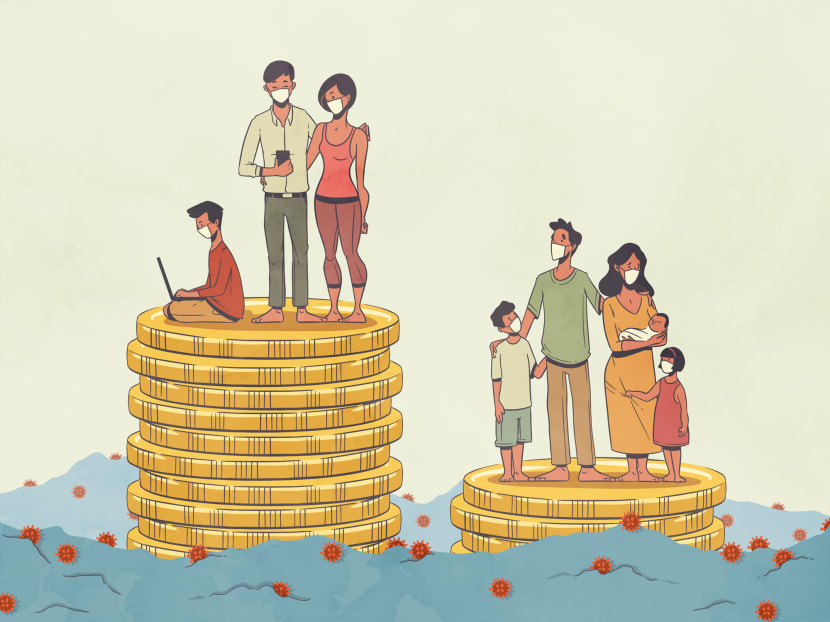
Singapore’s lower-income households as well as those who work in manual jobs, which typically pay lower salaries, face a more challenging reality during the pandemic.
- Covid-19 has upended everyone’s lives but lower income families and those working in manual jobs face a more challenging reality
- Their challenges include overcrowding at home, increased electricity and grocery bills, a lack of digital devices, and low job security
- The Government has rolled out many schemes to help these households
- Social welfare organisations and charities have also stepped forward with numerous initiatives
- But beyond short term fixes, there is a need to look at how low-income families can share in the economic recovery
SINGAPORE — Crammed in a two-room rental flat in Tampines with 11 other family members, homemaker Jalinah Jamaludin often fears that the Covid-19 virus could infect her whole family due to their living conditions.
Social distancing in her small apartment — which measures about 410 sq ft and has only one toilet and a bedroom — is out of the question, when the whole family has to stay at home for large parts of the day amid the community restrictions.
“It is impossible for us to be isolated if any of us happens to fall sick,” said Mdm Jalinah, 44.
She lives in the rented Housing and Development Board (HDB) flat with her ailing husband and 10 children, aged between eight and 20.
Over at one of the blocks of rental flats in Jalan Kukoh, where a new cluster of Covid-19 infections was discovered last week, Madam Roslianda Sulaiman, 52, had to send her granddaughter, 12, away to live with a relative for the girl’s safety.
She and her grandson, nine, had been issued with quarantine orders due to a possible close contact between the boy and a classmate at Cantonment Primary School.
Mdm Roslianda, a part-time dishwashing assistant at a food court, who has not worked for some time due to a leg condition and had lost her husband six months ago, said the week-long quarantine period was a much-needed respite amid her grief and the troubles of daily life.
“(Social workers) would send food to our doorstep, and my grandson’s teachers went out of their way to help him with his studies online,” she said.
This was a break from her daily grind of taking care of the two children, who were left with her by her estranged daughter, while trying to find paid work.
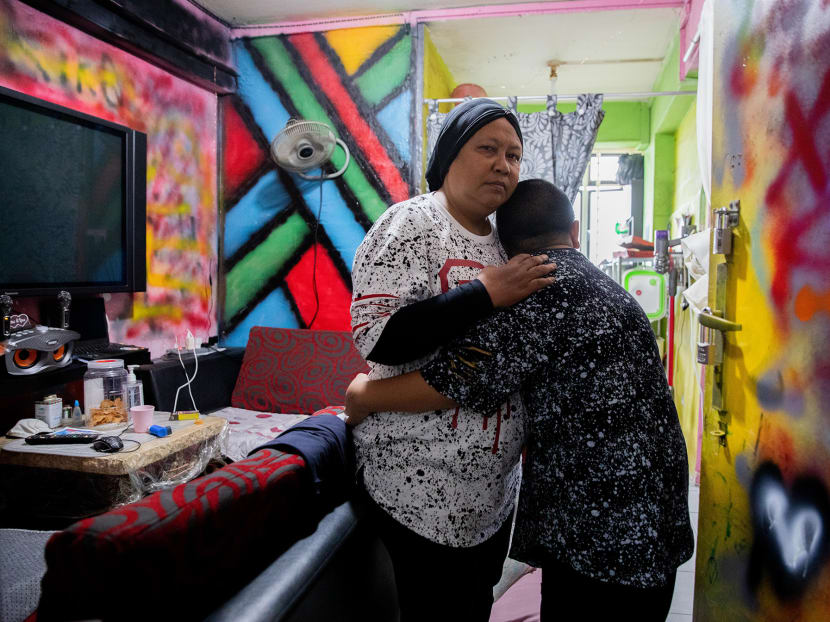
Two floors above, cleaner Ng Hock Seng, 71, who shares the rental flat with a friend, spoke about how his employer told him to not return to work until he receives a negative test result from the mandatory testing operation that began over the weekend. Mr Ng was tested on Tuesday.
His friend, who is also a cleaner, had already found out his test result through the TraceTogether phone application and had returned to his job.
But Mr Ng, a divorcee, has to remain at home to await the result — his old mobile phone lacks the features needed to install the contact tracing application, and social workers have arranged to give him a newer model next week.
All over the world, Covid-19 has ripped through societies with devastating effects on lives and livelihoods. In the process, it has also laid bare the fault lines.
In India for example, where social inequalities are stark and the Covid-19 death toll has exceeded 430,000, Dr Jagdish Hiremath, a leading cardiologist at India’s ACE Healthcare, noted in a tweet: “Social distancing is a privilege.
"It means you live in a house large enough to practise it. Hand washing is a privilege too. It means you have access to running water.
“Lockdowns are a privilege. It means you can afford to be at home. Most of the ways to ward off (the coronavirus) are accessible only to the affluent.”
The situation in Singapore is much less dire.
Nevertheless, the country’s lower-income households as well as those who work in manual jobs, which typically pay lower salaries, face a more challenging reality during the pandemic — whether it is to do with pandemic safety, access to digital services or caring for the young, said social workers and academics who study inequality.
Several international studies have shown that the overarching effects of Covid-19 could deepen inequalities between rich and poor nations, between urban and rural populations, and between communities of different socioeconomic levels, age, gender and colour.
In Singapore, the Government has made it a mission to “leave no one behind” amid the pandemic, which has left behind a deep and far-reaching impact on the social needs of Singaporeans, Minister for Social and Family Development Masagos Zulkifli said a year ago.
“The crisis will not divert us from our efforts to improve social mobility, and we will ensure that no Singaporean is left behind,” said Mr Masagos at the opening of Parliament following the General Election held in July last year.
The Government had boosted its long-term ComCare cash assistance scheme prior to the pandemic. Since a year ago, it has also enhanced The Courage Fund and the Covid-19 Recovery Grant to help lower- and middle-income workers and households affected by the virus or the measures needed to battle it.
Beyond state support, social welfare organisations and charities interviewed by TODAY cited the numerous programmes, schemes and Covid-19 specific emergency funds that they have raised to channel to the needy.
Singaporeans, too, have stepped up to help the less fortunate, forming ground-up initiatives and social efforts to reach out to those who need food, or a listening ear to tide them through a distressing period.
As of July 13, Singaporeans have donated a total of S$18.4 million to the Courage Fund, the Ministry of Social and Family Development (MSF) and the National Council of Social Services said earlier this month.
The fund provides broad support to families affected by the pandemic. Around S$3 million has been disbursed to more than 2,700 beneficiaries as of Aug 18, an MSF spokesman said in response to TODAY’s queries.
The Government has also introduced various targeted support measures, such as the Covid-19 Recovery Grant, which provides temporary financial support of up to S$700 per month, for three months, to eligible lower- to middle-income workers who lost their jobs or income due to the heightened alert measures.
As of July 18, around S$42 million have been disbursed, aiding around 21,000 beneficiaries under the Covid-19 Recovery Grant, the MSF spokesman said.
Despite such concerted efforts and assistance, there are some things in the day-to-day experience of living with Covid-19 that monetary handouts alone cannot fix.

PANDEMIC LIVING FOR LOW-INCOME HOUSEHOLDS
For Madam Siti Wahidah Abdul Wahab, 48, who lives in a two-room rental flat with her husband and five children, her family has managed to avoid spreading viruses to each other, by coming up with an “isolation system”.
“When someone is sick at home, they will be confined inside the room during the day, then the rest will stay outside. Only at night when we have to sleep, then we have no choice,” said Mdm Siti, adding that four family members sleep outside while three sleep in the room.
Likewise, for Mdm Jalinah, when any one member of her big family comes down with the flu bug, for example, the rest of them quickly get it as well.
“The doctor will often advise us to at least distance ourselves from other family members to prevent others from getting it,” she said, adding that space limitations in her cramped flat makes it impossible.
While she, too, ensures that her children maintain good hygiene, there are many factors beyond her control, such as when her children go to school and are exposed to others who might be sick.
Said Mdm Jalinah: “We have not had any Covid-19 scares but of course, we are scared. I have not thought of any solution for that (overcrowding).”

Space constraints aside, both Mdm Jalinah and Mdm Siti said that they also struggle with increased grocery bills when their entire families are forced to stay home, for example during the circuit breaker, or when their children are placed on home-based learning (HBL).
“Usually I will only cook once a day for dinner when everyone is home. My husband and I will just survive on bread or instant noodles during the day so that really saves us a lot. But now we cook a lot more and prices (of ingredients) are also going up, it’s hard,” said Mdm Siti.
Her family usually consumes 50kg of rice each month but during months when more people are home during the pandemic, it goes up to about 75kg.
To offset her expenses, Mdm Siti has been receiving about S$1,000 per month from ComCare, and another S$300 per month from the Islamic Religious Council of Singapore (Muis).
With her eldest two children having moved out after marriage, Mdm Siti’s third son is currently the family’s sole breadwinner.
During times of heightened alert, when many Singaporeans sheltering at home for safety can rely on food delivery platforms or online supermarkets, lower-income families cannot afford such a luxury.
“Sometimes when my husband has cravings, I will check online and see that the meal is S$4.50 but the delivery fee is S$9. Better for me to walk there slowly, right? I can buy two packets for S$9,” said Mdm Siti.
Among the lower-income households that TODAY spoke to, many had been provided with tablets, mobile phones and computers by social welfare organisations, or by schools to facilitate HBL.
To some, such devices are a lifesaver during the pandemic. Mr Ng, the cleaner, said he benefited from the free installation of wireless internet services in his home by a commercial provider, which he uses to watch the news through a tablet computer loaned to him.
Mr Ng said it is through the news that he learnt of the importance of getting vaccinated, instead of through hearsay from friends.
Other households lamented that the increasing use of digital devices has resulted in higher electricity bills.
Mdm Siti usually pays S$50 a week for electricity via the Pay-As-You-Use prepaid metering scheme, but would fork out S$70 during weeks when HBL is implemented, which would eat into her limited household budget.
Mdm Jalinah also had a similar experience, where at the end of some months, she is left with unpaid bills as she is unable to keep up with the increased cost in her family’s electricity usage.
And while her family has benefited from free-to-use devices, her 10 children still have to share one laptop and three tablet computers among themselves.
“On some days, they need to take turns to use them throughout the day to get their work done,” she said.
Bus attendant Madam Nurhaida Jantan, 37, also has to get two of her school-going children to share a single loaned laptop.
But things have improved from the circuit breaker last year, when her family had to rely on her phone’s mobile data for internet access, which quickly drained her prepaid data limits.
“Recently the Government came house-to-house to help us install Wi-Fi so we’ve had it since April this year. It’s much more convenient now, especially for the kids. If not, it will lag so much (using hotspot),” said the single mother.
In April last year, enhancements were made to the Home Access programme, which was launched in 2014 and has provided more than 14,000 low-income households with subsidised fibre broadband connectivity and the option to own devices.
Under the enhanced programme, low-income households with a gross monthly income of less than S$1,900 will be able to access faster Internet speeds and opt for a subsidised plan that offers a smartphone instead of a tablet.
The programme was also extended to households with schoolgoing children. Such households were previously only able to apply for a separate subsidised broadband scheme that comes bundled with a computer.
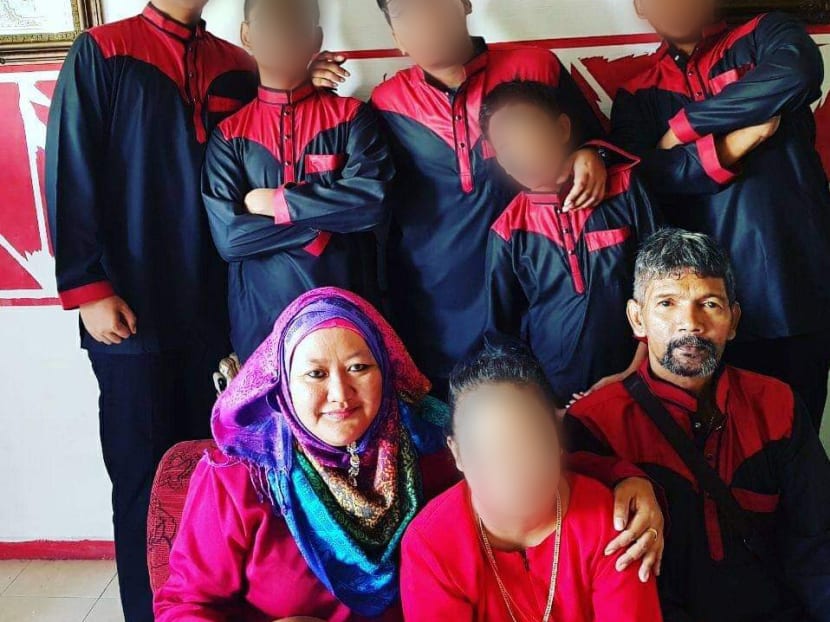
MANY HELPING HANDS
Sharing their observations in the past 18 months of the pandemic, social workers said vulnerable households have been at the mercy of drastic changes to their employment arrangements, which can lead to a loss of income.
Such disruptions have caused anxiety among many, since they often do not have much savings, social workers told TODAY.
“Low-income households will also struggle with payment of loans and arrears, and the problem with finances grows especially if they do turn to borrowing and additional loans to pay off existing debts or arrears,” said Mr Chan Soon Onn, head of CarePrison at Care Community Services Society.
He also found that low-income families tend to neglect their own nutritional intake in an effort to reduce expenses during crisis periods, which perpetuates the issue of food insecurity for them.
This is why there has been much effort to distribute food rations regularly to low-income families, through programmes such as the Community Development Council Student Meals Scheme, the Singapore Red Cross’ Meals with Love, and numerous other goodwill efforts run by social welfare organisations.
Ms Joanna Tan, chief executive officer of Children’s Wishing Well, said that while many Singaporeans dashed to the supermarkets at the onset of the circuit breaker, low-income families were unable to stockpile daily essentials.
“We also had to suspend our groceries shopping programme with the children due to safe distancing measures. We therefore immediately converted (the premises of) Children's Wishing Well into a mini supermarket so that the children can continue to have access to healthy and nutritious food. We also provided them with cooked hot lunches daily,” she recalled.
Her charity, which focuses on the holistic education of children and youth from disadvantaged backgrounds, also provides grants to low-income families to pay for utilities and housing loan debts and household appliances, and to sponsor training sessions for low-wage earners to pick up a new skill.
Mr Michael Switow, founder of charity One Singapore, said applications to its One Emergency Fund have also soared since the beginning of the pandemic.
The fund, which started in 2019, disburses money to assist low-income individuals and families in Singapore who urgently need help.
Mr Switow said: “We are finding more and more families in need of stopgap assistance, because their incomes have been affected by the pandemic. Sometimes, it's because employers have cut their hours; other times, it's the result of a stay-at-home notice.
“In 2020, the One Emergency Fund assisted nearly 300 families. Less than eight months into the year, and we have assisted nearly 500 families already.”
The MSF spokesman urged families who require help with their basic living expenses should approach their nearest social service office or call the ComCare hotline for assistance.
The ComCare public assistance schemes were established in 2005 and are funded through a S$1.7 billion kitty that is regularly topped up during annual Budgets. The schemes allow beneficiaries to receive cash assistance and support for household bills as well as medical expenses.
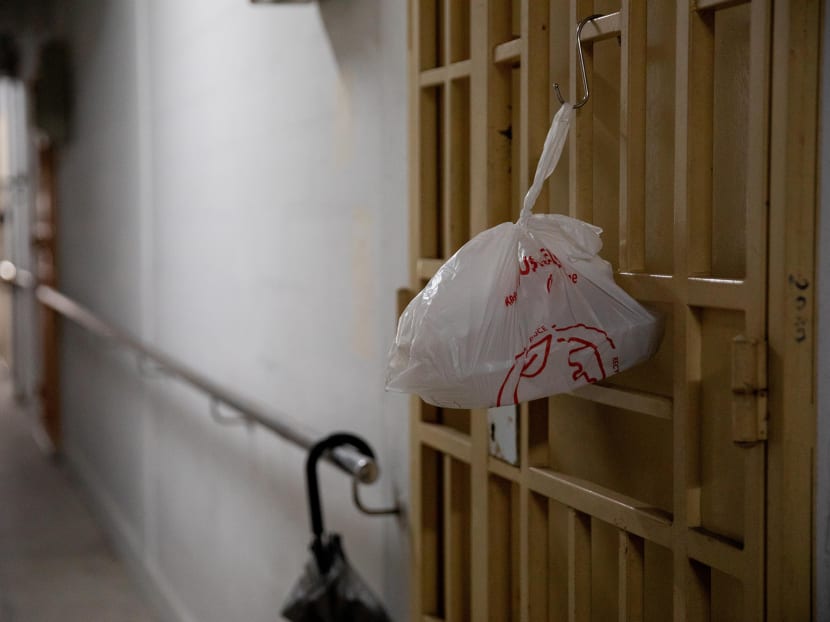
STUDIES WARN OF WIDENING INEQUALITY
The experiences faced by lower-income households interviewed by TODAY exemplify how precarious they can be during a crisis, especially so for a long-drawn one like the Covid-19 pandemic, said academics.
In August last year, DBS Bank found that more than 300,000 of its 1.2 million customers saw a decline in income of more than 10 per cent, according to data derived from an analysis of macroeconomic data and anonymised data insights from its retail customers.
Of these, a third of its customers experienced a sharper income loss of more than 50 per cent. The report cautioned that lower-income earners are likely to bear the brunt of the pandemic’s economic impact.
Earlier this year, a study by Beyond Social Services in February found that the median household income among 1,200 applicants for a Covid-19 family assistance fund fell by 69 per cent — from S$1,600 to S$500 — between April and September 2020.
These applicants are typically engaged in low-paid and manual forms of work such as cleaners, food stall assistants and delivery riders.
Likewise, the Government’s data also showed a similar trend, with the average household income in the bottom 10 per cent of households shrinking by 6.1 per cent of their total earnings from work between 2019 and last year.
This was the largest percentage decrease out of all other income brackets, according to the yearly Key Household Income Trends report released by the Department of Statistics. In comparison, the top 10 per cent of earners saw a 2.3 per cent fall in income.
Apart from differences in earnings, several academics stressed that the issue of inequality should be examined qualitatively by looking at how the daily experiences of the low-income groups differ from many other Singaporeans, who may experience disruptions related to Covid-19 differently.
For example, a mandatory five-day medical certificate (MC) for acute respiratory symptoms for a high-income earner may be no more than an inconvenience, noted Associate Professor Walter Theseira, an economist at the Singapore University of Social Sciences.
But for lower-wage workers who are paid daily and may not be entitled to paid MC leave, losing five days of work could mean potentially losing.a quarter of what they are usually paid each month, said Assoc Prof Theseira, a former Nominated MP.
“Low-income households generally survive on very thin margins during the best of times, with income just barely sufficient to cover needs, and with little time in their daily routine to manage unexpected challenges. Any disruption on either the income or the needs side is potentially catastrophic,” he said.
Dr Ong Qiyan, an adjunct senior research fellow at the National University of Singapore’s (NUS) Social Service Research Centre, said the pandemic has also shed light on existing housing inequalities, since a key containment strategy is to stay, work and study at home.
She said: “The striking contrast is that while more fortunate individuals with ample living spaces were seen setting up separate work-stations for each family member, often in separate rooms due to the need for online meetings, members of a low-income household had to endure the interferences from each other’s activities.”
This threatens both the work performances of work-from-home parents and the education and emotional regulation of schooling children, she noted.
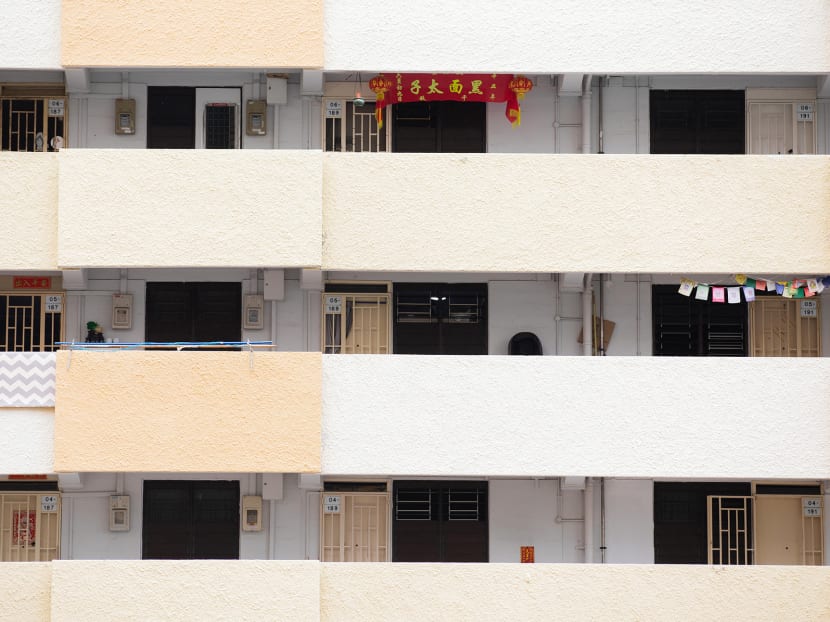
NUS sociologist Tan Ern Ser agreed, adding that lower-income households often lack the digital knowledge and financial ability to own the latest digital devices compared to more advantaged households.
Assoc Prof Tan said: “The experience and feeling of material deprivation in both relative and absolute terms; of being unable to cope, let alone compete; and of being left behind, could lead to a perception of being unfairly treated or disadvantaged and of utter desperation, despair, and alienation.
“The widening income gap could produce class envy, class tension, and a negative orientation towards the Government.”
DIGITAL DIVIDE AND INCOME GAP
With the pandemic accelerating digital transformation, technology and remote work, the lack of access to digital skills could risk becoming a crippling disadvantage for these households.
A 2020 report by the Organisation for Economic Co-operation and Development on the digital economy outlook said that while the pandemic has demonstrated the tremendous potential of the digital transformation, it has also accentuated the gaps that remain.
“Faced with a future where jobs, education, health, government services and even social interactions may be more dependent on digital technologies than ever before, failing to ensure widespread and trustworthy digital access and effective use risks deepening inequalities, and may hinder countries’ efforts to emerge stronger from the pandemic,” the report said.
As Dr Faizal Yahya, a senior research fellow in the Governance and Economy Department at the Institute of Policy Studies, noted, the disruption caused by technology was what deepened inequalities in the past, but the Covid-19 pandemic has now accelerated that process.
“The polarisation between the low-income, low-skilled, and the high-income, high-skilled is likely to widen, causing greater income inequality,” he said.
For low-earning households, their jobs are usually more precarious, often requiring them to be physically exposed to health risks despite the pandemic because they cannot be performed remotely, added Assoc Prof Theseira.
Cleaners, such as rental flat resident Cheng Poh Joo, 60, cannot work from home amid Covid-19 restrictions, even though she admits to being scared of contracting the virus at a time when vaccinations were not available.
Mdm Nurhaida, the bus attendant, told TODAY that she is also concerned about the safety of her family and herself.
She interacts with preschool and international school students in her work, and feels compelled to go for a swab test at a clinic near her two-room HDB flat in Jalan Minyak every fortnight as a precautionary measure.
“Instead of asking my company to cover the costs, I just use my money. Like S$5 (per test) just to have that reassurance that I'm okay. Even though I’m already vaccinated, I still can be the carrier of Covid-19,” said Mdm Nurhaida, who was also out of work during the circuit breaker as schools were closed.
On the other hand, some highlighted the allure of gig work such as food delivery services, which has surged in popularity due to dining-in curbs.
Two GrabFood delivery riders in Toa Payoh, aged 21 and 23, told TODAY that food orders started booming during the heightened alert periods, allowing them to earn around S$3,000 a month. They added that monthly earnings of S$5,000 was also not unheard of among their fellow riders.
With gig work offering them a comfortable income, they said they have stopped looking for other full-time jobs or trying to pick up new skills while they are still relatively young.
“I’ve no time to go for lessons when I can (use the time to) make more money doing 30 food deliveries each day,” said the 21-year-old who wanted to be known only as Jayson.
Despite opening up a new stream of income for lower-income households, the gig economy’s popularity among this group is a big concern, said Ms Kaylee Kua, senior manager of programmes and operations at charity Daughters of Tomorrow.
Since gig work is a form of self-employed work and is not protected under the Employment Act, workers are not required to contribute to their Central Provident Fund. Nor do they qualify for any employment benefits, such as paid medical leave and maternity leave.
“A lot of them live hand-to-mouth, so gig jobs are attractive because they pay out more regularly than a monthly salary. But we are concerned about the long run, that their children and the society at large will have to take up the responsibility when they reach retirement age and don’t have enough to support themselves,” she said.
Ms Yeo Wan Ling, who is advisor to the National Taxi Association, National Private Hire Vehicles Association and National Delivery Champions Association, said the uncertainty of finding consistent work, the negotiation of fair contract terms and timely payment are the top concerns for these workers.
Unlike employees, food delivery riders who injure themselves on the job cannot claim for work injuries under the Work Injury Compensation Act (Wica), and current medical coverage provided by the delivery platforms are “inadequate and uneven”.
The labour movement has urged the Government to extend Wica protections to these workers, said Ms Yeo, who is also a Member of Parliament for Pasir Ris-Punggol Group Representation Constituency.
Ms Yeo said her three associations have reached out to the platforms that provide gig work to discuss “ fair structures, fair terms, fair processes, and safe work practices”.
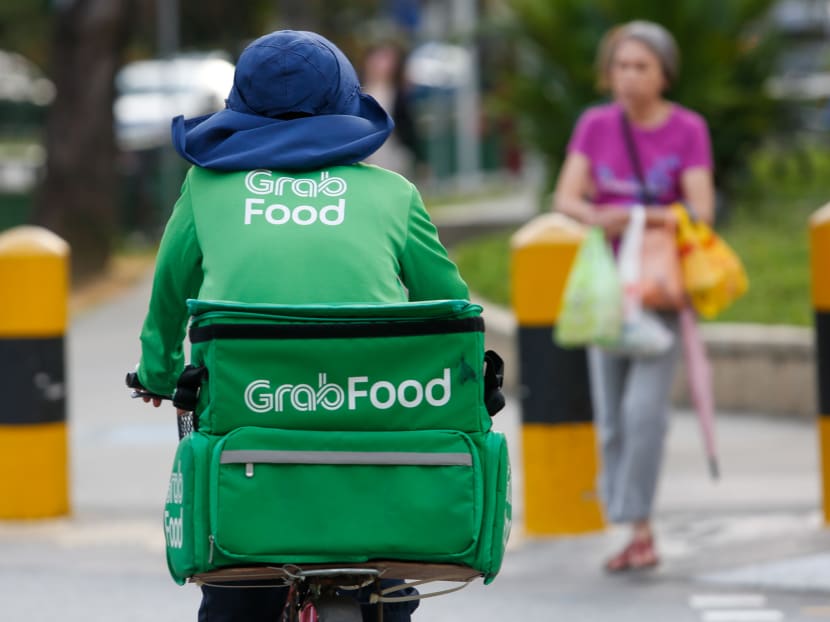
Nevertheless, NUS’ Dr Ong said there is a need to look deeper into how training benefits low-wage workers.
“There are many schemes to support upgrading in these pandemic times in preparation for more digitalisation in work. Many financial support schemes are tied to individuals’ participation in training or activities to improve their work situations,” she said.
She stressed that it is crucial that the training programmes have a “real impact” on the wages and job prospects of low-income earners.
“Otherwise, these could simply be additional responsibilities they have to juggle, which may increase further risks of psychological functioning impairments, leading to even poorer decision-making and performances,” she added.
MINDING THE GAP
Assoc Prof Theseira said that people should also be concerned whether Covid-19 has made it worse for low-income households overall, even with the unprecedented amount of support that they have received.
While there has been extensive government support for lower-income families during Covid-19, there is no data to show if that has put them back on the paths they were before the pandemic, he said.
“We have to take the perspective that low-income families are likely to have suffered impacts that go beyond just the wage losses. Career paths have been upended, families have suffered tremendous stress from being trapped in what is often inadequate housing, and resources will have been drained to cope with the various challenges of daily life under Covid-19 and our changing economic and social restrictions,” he said.
“We have to look at schemes that go beyond just 'fixing' the losses in wages, which have already been accomplished to some extent, and look at how to ensure that low-income families can share in the economic recovery, through helping them achieve higher earnings and better job opportunities.”
It also means addressing the burdens of everyday life, such as through flexible work arrangements, so that working age members in these households can seek meaningful employment without having to compromise due to their personal circumstances.
One such group, for example, is single mothers, who make up around 40 per cent of Daughters of Tomorrow’s beneficiaries.
Ms Kua noted that working single mothers often find it necessary to reduce their working hours in order to take care of the elderly or children, which leads to them having little for themselves and becoming needy in their retirement years due to a lack of savings.
“That is a pretty important point, because if they do not have enough in their Central Provident Fund or funds for retirement, it could end up in transgenerational poverty because the burden of care passes to their children, who may then have to leave their jobs to look after their parents,” added Ms Kua.
With the unprecedented amounts of financial aid used to help needy families stay afloat during the pandemic, several interviewees also reiterated the importance of allowing them to provide for themselves instead of solely relying on aid.
Ms Selene Ong, the acting head of the Community Resilience department at the Singapore Red Cross, said these families have faced a plethora of challenges during the pandemic, such as the loss of jobs and income, and experiencing feelings of uncertainty.
This has made the process of securing new employment, either by having to upskill or to seek career counselling, feel like a long and uncertain one.
“Some may even have lost hope along the way and fell back to total reliance on assistance, which whilst temporary, was provided almost immediately if they walked in and presented the necessary documents,” said Ms Ong.













